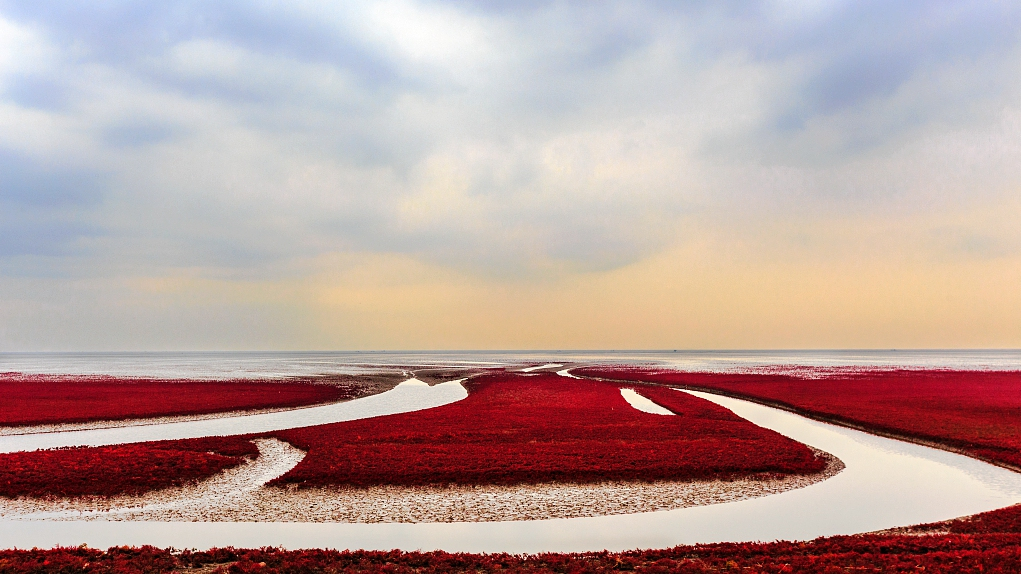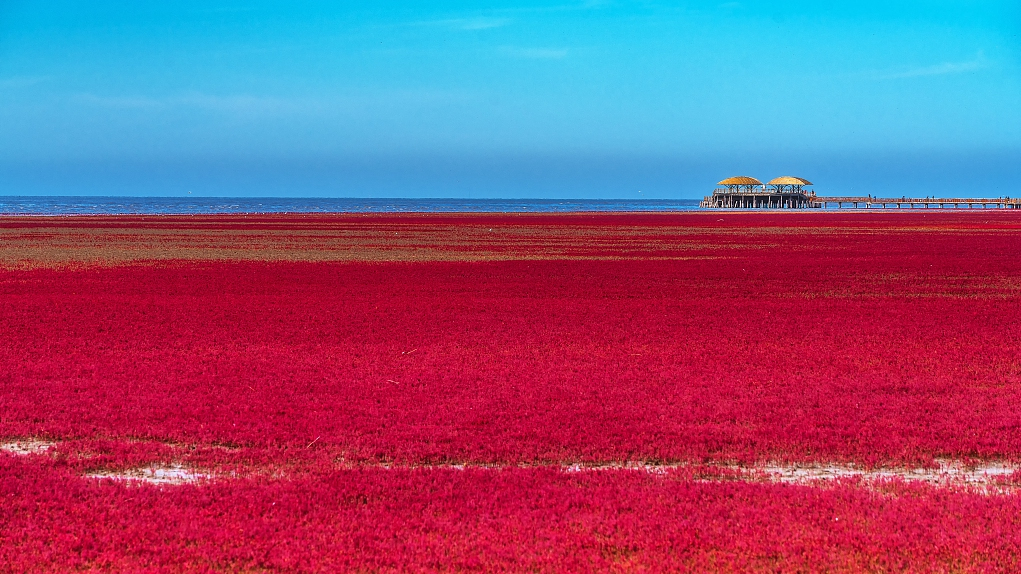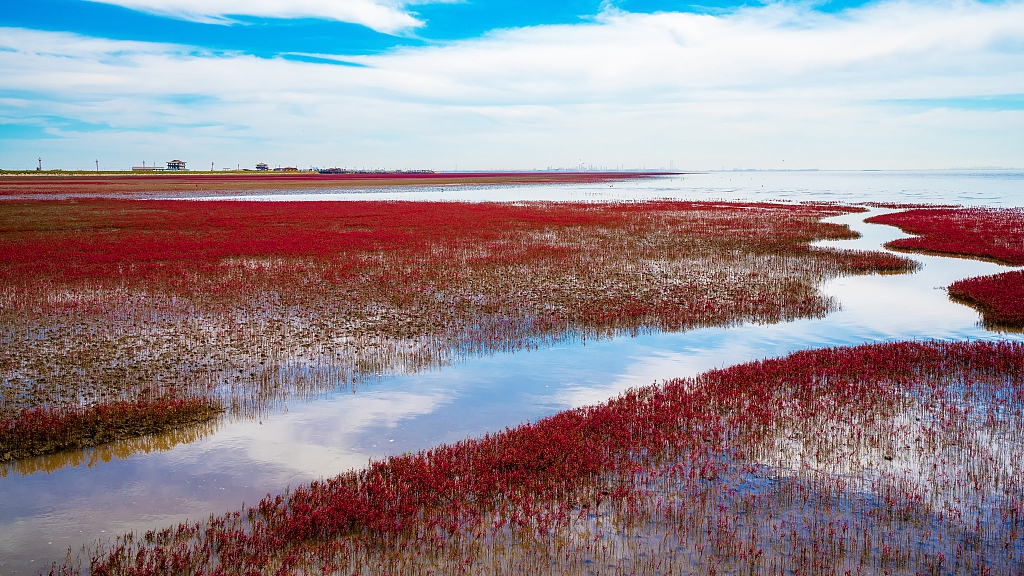
'Red Beach' in China. /VCG Photo
'Red Beach' in China. /VCG Photo
With the arrival of autumn, lots of people are attracted by the "Red Beach" in China, which is known for its landscape featuring the red plant Suaeda salsa. This type of plant starts to grow in April, and stays green until it turns vividly red in autumn. But what is the reason behind its color change in the autumn?

'Red Beach' is caused by a red plant called Suaeda salsa. /VCG Photo
'Red Beach' is caused by a red plant called Suaeda salsa. /VCG Photo

High salt level causes Suaeda salsa to turn red. /VCG Photo
High salt level causes Suaeda salsa to turn red. /VCG Photo
Interestingly, the main reason that causes Suaeda salsa to turn red is the increasing salt level and the lowering temperature. In autumn, when the frequency of tide activity starts to increase, the salt level in wetland also rises. In addition to increasing salt levels, the temperature also falls in autumn. All those conditions lead to the formation and accumulation of betalain which is a red pigment commonly found in plants.

As the level of betalain rises, Suaeda salsa reduces the absorption of light energy. /VCG Photo
As the level of betalain rises, Suaeda salsa reduces the absorption of light energy. /VCG Photo
As the level of betalain rises, Suaeda salsa reduces the absorption of light energy, leading to the reduction of chlorophyll content. With chlorophyll content decreasing and Suaeda salsa turning red, it needs less energy to live. This helps them to survive in the high salt level environment.
(All images via VCG.)
(If you want to contribute and have specific expertise, please contact us at nature@cgtn.com.)